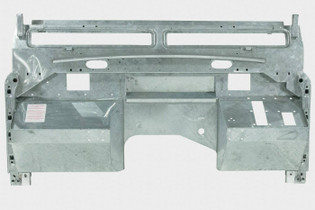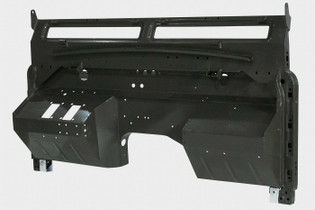One common thing we hear people ask after receiving their bulkhead is;
‘Why does our welds look so visible and protruding?‘
‘Why do you not grind and polish them down?’
‘Why don’t you spot weld to help avoid this?‘
The answer is that we decided to eliminate double skinning (a process Land Rover used) on the bulkhead to prevent moisture & rust traps. As we don’t double skin instead we have increased the strength of the steel from 1.0mm (Land Rover OEM) to a heavier 1.5mm steel. Spot welding does not work on this heavier steel. The additional benefit of upgrading to 1.5mm steel is that the entire bulkhead is strengthend throughout.
We know that our customers take a lot of time and pride in their work, and want their completed vehicles to look their best.
As Defender owners ourselves, we understand this desire for OEM perfection, and so we strive to produce high quality products that make our customers happy.
Achieving a high quality finish and appearance is just as important to us as it is to our customers.
Below is a short description on what causes raised welds;
The raised welds are not a result of neglect during manufacturing, or that we couldn’t be bothered to take the time to grind & polish the welds down. In fact, all welds on Shielder Bulkheads and Chassis are ground and polished flat before galvanising.
Here is the actual reason behind the raised welds;
Raised welds after galvanizing are a common occurrence in the fabrication industry.
Why?
During the galvanising process the metal is submerged in molten zinc at approximatley 450 Celcius. This rapid change in temperature causes a differing chemistry between the steel and the weld material — namely the silicon level.
Some concentrations of silicon can speed up the metallurgic reaction between the zinc and steel, causing rapid large crystal growth. This in turn, causes the welds to become raised in comparison with the surrounding steel. So after the galvanising process the human eye is easily drawn to the welds and as a result opinions form.
So the preparation before priming and painting is equally as important as to the painting itself.









